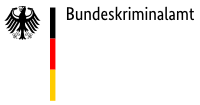
The Firearms Identification Services of the KTI maintains a collection of reference weapons for use in forensic image comparison that is unrivalled (at least in terms of scope) in the Federal Republic of Germany: the Central Weapons Collection, which currently comprises nearly 9,000 items. The Central Weapons Collection is also used by criminal police and forensic experts for a number of other purposes. It facilitates the identification of modifications made by offenders as compared to the original weapons and is an important source of data for the German police.


The Central Weapons Collection is the starting point for the weapons atlas, an online collection of images and data on commonly used handguns made available to the German police. The exhibits may be used for ballistic experiments and also serve as samples for firearms type determination. With this method, the model of a weapon used by criminal offender can be identified on the basis of characteristic firing marks on shell casings and projectiles.
Wherever shots are fired at a crime scene, a mostly complex trace evidence pattern arises. Considered as a whole, shot damage, ejected shell casings and other traces such as blood spots as well as witness testimony may enable analysts to reconstruct at least certain circumstances of a crime. Evidence collection, reconstruction and evaluation are the responsibility of the “Forensic Ballistics” section, which makes use of state-of-the-art methods and technologies. The rapidly unfolding sequence of events involved in the firing of a shot can be observed and analyzed with various high-speed cameras in the ballistics laboratory. In this way, for example, it is possible to reconstruct the penetration of a projectile through a gelatine block (a simulation medium for muscle tissue) in slow motion. The ballistics experts at the KTI are regularly called upon to provide guidance and support in significant cases at both the national and international level.
 Sequence of the perforation of a gelatine block (length: 30 cm) made by a 308 Winchester calibre projectile at an impact velocity of approx. 700 m/s
Sequence of the perforation of a gelatine block (length: 30 cm) made by a 308 Winchester calibre projectile at an impact velocity of approx. 700 m/s
